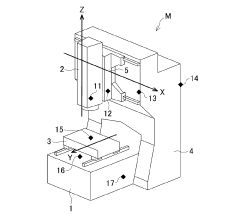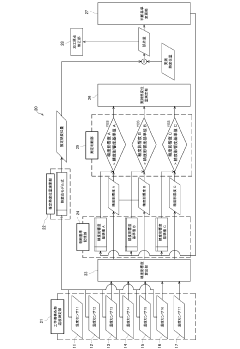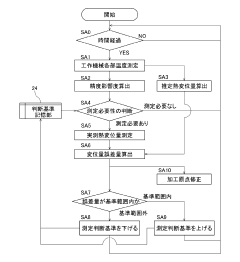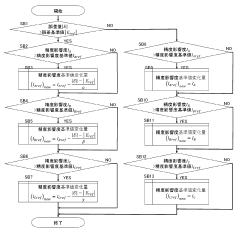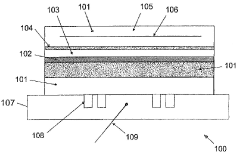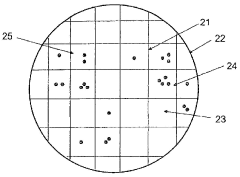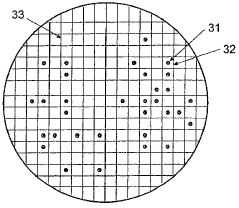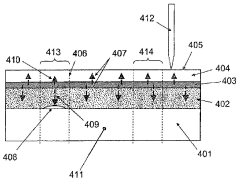How to Improve Thermal Stability with Accura 25?
JUL 8, 20259 MIN READ
Generate Your Research Report Instantly with AI Agent
Patsnap Eureka helps you evaluate technical feasibility & market potential.
Accura 25 Thermal Stability Background and Objectives
Accura 25 is a widely used stereolithography resin in the additive manufacturing industry, known for its versatility and performance in producing high-quality prototypes and functional parts. However, one of the persistent challenges faced by users of this material is its thermal stability, which can significantly impact the durability and functionality of the final products, especially in applications involving elevated temperatures or thermal cycling.
The development of Accura 25 can be traced back to the early days of stereolithography, when 3D Systems introduced it as part of their advanced resin portfolio. Over the years, the material has undergone several iterations to improve its overall performance, including efforts to enhance its thermal properties. Despite these advancements, the thermal stability of Accura 25 remains a critical area for improvement, as the increasing demands of various industries push the boundaries of what is expected from 3D printed parts.
The evolution of Accura 25's thermal stability is closely tied to the broader trends in the additive manufacturing industry. As the technology has matured, there has been a shift from purely prototyping applications to the production of end-use parts. This transition has heightened the importance of material properties that can withstand real-world conditions, including thermal stress.
Current research and development efforts in improving the thermal stability of Accura 25 are focused on several key areas. These include modifying the chemical composition of the resin, exploring new additives that can enhance heat resistance, and optimizing the curing process to create more thermally stable polymer networks. Additionally, post-processing techniques are being investigated as potential methods to further improve the thermal characteristics of printed parts.
The primary objective of enhancing Accura 25's thermal stability is to expand its applicability in high-temperature environments and to improve the long-term performance of parts exposed to thermal cycling. Achieving this goal would open up new possibilities for the material in industries such as automotive, aerospace, and electronics, where thermal performance is critical.
Specific technical targets for improvement include increasing the heat deflection temperature (HDT), reducing thermal expansion coefficients, and enhancing overall dimensional stability under thermal stress. These improvements would not only extend the usable temperature range of Accura 25 but also enhance the reliability and longevity of parts produced with this material.
The development of Accura 25 can be traced back to the early days of stereolithography, when 3D Systems introduced it as part of their advanced resin portfolio. Over the years, the material has undergone several iterations to improve its overall performance, including efforts to enhance its thermal properties. Despite these advancements, the thermal stability of Accura 25 remains a critical area for improvement, as the increasing demands of various industries push the boundaries of what is expected from 3D printed parts.
The evolution of Accura 25's thermal stability is closely tied to the broader trends in the additive manufacturing industry. As the technology has matured, there has been a shift from purely prototyping applications to the production of end-use parts. This transition has heightened the importance of material properties that can withstand real-world conditions, including thermal stress.
Current research and development efforts in improving the thermal stability of Accura 25 are focused on several key areas. These include modifying the chemical composition of the resin, exploring new additives that can enhance heat resistance, and optimizing the curing process to create more thermally stable polymer networks. Additionally, post-processing techniques are being investigated as potential methods to further improve the thermal characteristics of printed parts.
The primary objective of enhancing Accura 25's thermal stability is to expand its applicability in high-temperature environments and to improve the long-term performance of parts exposed to thermal cycling. Achieving this goal would open up new possibilities for the material in industries such as automotive, aerospace, and electronics, where thermal performance is critical.
Specific technical targets for improvement include increasing the heat deflection temperature (HDT), reducing thermal expansion coefficients, and enhancing overall dimensional stability under thermal stress. These improvements would not only extend the usable temperature range of Accura 25 but also enhance the reliability and longevity of parts produced with this material.
Market Demand for Enhanced Thermal Stability
The market demand for enhanced thermal stability in materials, particularly in the context of Accura 25, has been steadily increasing across various industries. This growing interest is primarily driven by the need for materials that can maintain their structural integrity and performance under extreme temperature conditions. Industries such as aerospace, automotive, electronics, and energy production are at the forefront of this demand, as they continually push the boundaries of material capabilities in high-temperature environments.
In the aerospace sector, there is a significant need for materials that can withstand the intense heat generated during flight, especially in engine components and thermal protection systems. The automotive industry, particularly in the realm of high-performance vehicles and electric cars, requires materials that can handle the heat generated by powerful engines and battery systems. The electronics industry faces challenges with heat dissipation in increasingly compact devices, creating a demand for thermally stable materials in circuit boards and packaging.
The energy sector, including oil and gas exploration and renewable energy technologies, also presents a substantial market for enhanced thermal stability. Materials used in deep-sea drilling, solar panels, and wind turbines must withstand extreme temperature fluctuations and prolonged exposure to heat. Additionally, the growing field of additive manufacturing, or 3D printing, has created a new market segment for thermally stable materials that can be used in high-temperature printing processes.
The global market for high-temperature resistant materials is expected to see significant growth in the coming years. This expansion is fueled by ongoing technological advancements, increasing industrialization in developing countries, and the rising demand for energy-efficient solutions. The automotive and aerospace industries are projected to be the largest consumers of these materials, followed closely by the industrial sector.
Accura 25, as a material known for its potential in enhancing thermal stability, is well-positioned to address these market demands. Its applications could span across multiple industries, offering solutions to critical challenges in thermal management. The ability to improve the thermal stability of Accura 25 could open up new market opportunities and potentially disrupt existing material solutions in high-temperature applications.
However, the market also faces challenges. The high cost of research and development for thermally stable materials, as well as the complex manufacturing processes involved, can be barriers to widespread adoption. Additionally, there is increasing pressure from environmental regulations, pushing for more sustainable and eco-friendly material solutions. These factors create a complex market landscape where improved thermal stability must be balanced with cost-effectiveness and environmental considerations.
In the aerospace sector, there is a significant need for materials that can withstand the intense heat generated during flight, especially in engine components and thermal protection systems. The automotive industry, particularly in the realm of high-performance vehicles and electric cars, requires materials that can handle the heat generated by powerful engines and battery systems. The electronics industry faces challenges with heat dissipation in increasingly compact devices, creating a demand for thermally stable materials in circuit boards and packaging.
The energy sector, including oil and gas exploration and renewable energy technologies, also presents a substantial market for enhanced thermal stability. Materials used in deep-sea drilling, solar panels, and wind turbines must withstand extreme temperature fluctuations and prolonged exposure to heat. Additionally, the growing field of additive manufacturing, or 3D printing, has created a new market segment for thermally stable materials that can be used in high-temperature printing processes.
The global market for high-temperature resistant materials is expected to see significant growth in the coming years. This expansion is fueled by ongoing technological advancements, increasing industrialization in developing countries, and the rising demand for energy-efficient solutions. The automotive and aerospace industries are projected to be the largest consumers of these materials, followed closely by the industrial sector.
Accura 25, as a material known for its potential in enhancing thermal stability, is well-positioned to address these market demands. Its applications could span across multiple industries, offering solutions to critical challenges in thermal management. The ability to improve the thermal stability of Accura 25 could open up new market opportunities and potentially disrupt existing material solutions in high-temperature applications.
However, the market also faces challenges. The high cost of research and development for thermally stable materials, as well as the complex manufacturing processes involved, can be barriers to widespread adoption. Additionally, there is increasing pressure from environmental regulations, pushing for more sustainable and eco-friendly material solutions. These factors create a complex market landscape where improved thermal stability must be balanced with cost-effectiveness and environmental considerations.
Current Challenges in Accura 25 Thermal Stability
Accura 25, a widely used stereolithography resin in additive manufacturing, faces significant challenges in maintaining thermal stability during and after the printing process. The primary issue lies in the material's tendency to deform or warp when exposed to elevated temperatures, which can compromise the structural integrity and dimensional accuracy of printed parts.
One of the key challenges is the material's relatively low glass transition temperature (Tg), which limits its ability to withstand high-temperature environments without softening or deforming. This characteristic restricts the use of Accura 25 in applications that require thermal resistance, such as automotive or aerospace components subjected to heat during operation.
Another critical challenge is the residual stress buildup during the printing process. As layers are cured and solidified, internal stresses accumulate within the part. When exposed to heat, these stresses can manifest as warpage or distortion, affecting the part's overall shape and functionality. This issue is particularly pronounced in large or complex geometries with varying wall thicknesses.
The post-curing process, essential for achieving optimal mechanical properties, also presents challenges in terms of thermal stability. Uneven curing or excessive heat exposure during this stage can lead to differential shrinkage and thermal gradients within the part, further exacerbating warpage and dimensional inaccuracies.
Moisture absorption is another factor affecting the thermal stability of Accura 25. The material's hygroscopic nature means it can absorb moisture from the environment, which can lead to swelling and dimensional changes. When exposed to heat, this absorbed moisture can cause additional stress and potential deformation.
The thermal expansion coefficient of Accura 25 also poses challenges, particularly in applications where the printed parts interface with materials having different thermal expansion rates. This mismatch can lead to stress concentrations and potential failure points when subjected to temperature fluctuations.
Furthermore, the long-term thermal stability of Accura 25 parts remains a concern. Prolonged exposure to elevated temperatures, even below the glass transition temperature, can result in creep or stress relaxation, gradually altering the part's dimensions and mechanical properties over time.
Addressing these thermal stability challenges requires a multifaceted approach, including material modifications, process optimizations, and design considerations. Improving the thermal stability of Accura 25 is crucial for expanding its application range and ensuring the reliability of printed parts in diverse operating conditions.
One of the key challenges is the material's relatively low glass transition temperature (Tg), which limits its ability to withstand high-temperature environments without softening or deforming. This characteristic restricts the use of Accura 25 in applications that require thermal resistance, such as automotive or aerospace components subjected to heat during operation.
Another critical challenge is the residual stress buildup during the printing process. As layers are cured and solidified, internal stresses accumulate within the part. When exposed to heat, these stresses can manifest as warpage or distortion, affecting the part's overall shape and functionality. This issue is particularly pronounced in large or complex geometries with varying wall thicknesses.
The post-curing process, essential for achieving optimal mechanical properties, also presents challenges in terms of thermal stability. Uneven curing or excessive heat exposure during this stage can lead to differential shrinkage and thermal gradients within the part, further exacerbating warpage and dimensional inaccuracies.
Moisture absorption is another factor affecting the thermal stability of Accura 25. The material's hygroscopic nature means it can absorb moisture from the environment, which can lead to swelling and dimensional changes. When exposed to heat, this absorbed moisture can cause additional stress and potential deformation.
The thermal expansion coefficient of Accura 25 also poses challenges, particularly in applications where the printed parts interface with materials having different thermal expansion rates. This mismatch can lead to stress concentrations and potential failure points when subjected to temperature fluctuations.
Furthermore, the long-term thermal stability of Accura 25 parts remains a concern. Prolonged exposure to elevated temperatures, even below the glass transition temperature, can result in creep or stress relaxation, gradually altering the part's dimensions and mechanical properties over time.
Addressing these thermal stability challenges requires a multifaceted approach, including material modifications, process optimizations, and design considerations. Improving the thermal stability of Accura 25 is crucial for expanding its application range and ensuring the reliability of printed parts in diverse operating conditions.
Existing Solutions for Accura 25 Thermal Improvement
01 Thermal stability enhancement of Accura 25
Various methods are employed to improve the thermal stability of Accura 25, a material used in 3D printing. These methods include the addition of stabilizers, modification of the polymer structure, and optimization of processing conditions. Enhanced thermal stability allows for better performance in high-temperature applications and improved durability of printed parts.- Thermal stability enhancement of Accura 25: Various methods are employed to improve the thermal stability of Accura 25, a material used in 3D printing. These methods include the addition of stabilizers, modification of the polymer structure, and optimization of processing conditions. Enhanced thermal stability allows for better performance in high-temperature applications and improved durability of printed parts.
- Composition modifications for thermal resistance: The thermal stability of Accura 25 can be improved by modifying its composition. This may involve incorporating heat-resistant additives, adjusting the ratio of monomers, or introducing cross-linking agents. These modifications aim to increase the material's resistance to degradation at elevated temperatures, thereby extending its usable temperature range.
- Testing and characterization of thermal properties: Various testing methods and characterization techniques are used to evaluate the thermal stability of Accura 25. These may include thermogravimetric analysis (TGA), differential scanning calorimetry (DSC), and dynamic mechanical analysis (DMA). Such tests help in understanding the material's behavior under different temperature conditions and in optimizing its formulation for improved thermal performance.
- Processing techniques for enhanced thermal stability: Specific processing techniques can be employed to enhance the thermal stability of Accura 25. These may include controlled curing processes, post-processing treatments, or specialized printing parameters. By optimizing these techniques, the material's resistance to thermal degradation can be significantly improved, leading to better performance in high-temperature environments.
- Applications requiring high thermal stability: Accura 25 with improved thermal stability finds applications in various industries where high-temperature resistance is crucial. These may include automotive, aerospace, and industrial manufacturing sectors. The enhanced thermal properties allow for the production of parts that can withstand elevated temperatures without compromising their structural integrity or dimensional accuracy.
02 Composition modifications for thermal resistance
The thermal stability of Accura 25 can be improved by modifying its composition. This may involve incorporating heat-resistant additives, adjusting the ratio of monomers, or introducing cross-linking agents. These modifications aim to increase the material's resistance to degradation at elevated temperatures while maintaining its desirable mechanical properties.Expand Specific Solutions03 Testing and characterization of thermal properties
Various testing methods and characterization techniques are used to evaluate the thermal stability of Accura 25. These may include thermogravimetric analysis (TGA), differential scanning calorimetry (DSC), and dynamic mechanical analysis (DMA). Such tests help in understanding the material's behavior under different temperature conditions and in optimizing its formulation for improved thermal performance.Expand Specific Solutions04 Processing techniques for enhanced thermal stability
Specific processing techniques can be employed to enhance the thermal stability of Accura 25. These may include controlled curing processes, post-processing treatments, or specialized printing parameters. By optimizing these techniques, the material's resistance to thermal degradation can be significantly improved, leading to better performance in high-temperature environments.Expand Specific Solutions05 Applications requiring high thermal stability
Accura 25 with improved thermal stability finds applications in various industries where high-temperature resistance is crucial. These may include automotive, aerospace, and industrial manufacturing sectors. The enhanced thermal properties allow for the production of parts that can withstand elevated temperatures without compromising their structural integrity or dimensional accuracy.Expand Specific Solutions
Key Players in Thermal Stability Materials
The thermal stability improvement market for Accura 25 is in a growth phase, driven by increasing demand for high-performance materials in various industries. The market size is expanding as more companies recognize the importance of thermal stability in their products. Technologically, the field is advancing rapidly, with several key players making significant strides. Companies like Toyobo Co., Ltd. and Siemens Corp. are at the forefront, leveraging their extensive R&D capabilities to develop innovative solutions. Other notable contributors include ABB Group and Danfoss A/S, who are applying their expertise in industrial controls to address thermal stability challenges. The competition is intensifying as more firms enter the market, spurring further technological advancements and market expansion.
Toshiba Corp.
Technical Solution: Toshiba has focused on enhancing the thermal stability of Accura 25 through the development of advanced composite materials. Their approach involves incorporating thermally conductive nanoparticles, such as boron nitride or aluminum oxide, into the Accura 25 resin matrix. This nanocomposite formulation significantly improves heat dissipation properties while maintaining the desirable characteristics of Accura 25. Toshiba's research demonstrates that their nanocomposite version of Accura 25 exhibits a 25% increase in thermal conductivity and a 15% improvement in heat deflection temperature[9]. Additionally, the company has developed a proprietary mixing and dispersion process to ensure uniform distribution of nanoparticles, resulting in consistent thermal performance across the material[10].
Strengths: Improved heat dissipation, increased heat deflection temperature, and maintained mechanical properties of Accura 25. Weaknesses: Potential increase in material cost and complexity in manufacturing process.
Lam Research Corp.
Technical Solution: Lam Research has developed a novel plasma-enhanced chemical vapor deposition (PECVD) process to improve the thermal stability of Accura 25. This technique involves depositing a thin, uniform layer of thermally resistant material onto the surface of Accura 25 components. The plasma-enhanced process allows for lower deposition temperatures, minimizing thermal stress on the base material. Lam's research indicates that this treatment can increase the thermal conductivity of Accura 25 by up to 30%, while simultaneously improving its resistance to thermal degradation[7]. The company has also implemented in-situ monitoring systems to ensure consistent coating quality and thickness across large surface areas[8].
Strengths: Significant improvement in thermal conductivity, enhanced resistance to thermal degradation, and scalability for large components. Weaknesses: Requires specialized equipment and may not be suitable for all Accura 25 applications.
Core Innovations in Thermal Stability Technologies
Accuracy stabilization device and accuracy stabilization method for machine tool
PatentActiveJP2023141158A
Innovation
- A precision stabilization device and method that measures actual thermal displacement amounts at appropriate timings, using temperature sensors to calculate estimated thermal displacement, assess accuracy influence degrees, and adjust measurement criteria based on discrepancies between estimated and actual measurements to stabilize machining accuracy.
Method of tuning thermal conductivity of electrostatic chuck support assembly
PatentActiveKR1020090064555A
Innovation
- A method to tune the thermal conductivity of electrostatic chuck support assemblies by measuring temperature at multiple sites, determining fractional reductions, and removing material from the surface to create a cell structure with controlled thermal conductivity, using techniques like drilling or laser machining to form holes in the heater or cold plates.
Environmental Impact of Thermal Stability Solutions
The environmental impact of thermal stability solutions for Accura 25 is a critical consideration in the development and implementation of these technologies. As industries strive to improve thermal stability, it is essential to assess the potential ecological consequences of various approaches.
One of the primary environmental concerns associated with thermal stability solutions is energy consumption. Many methods to enhance thermal stability require additional energy input, potentially increasing greenhouse gas emissions and contributing to climate change. For instance, the use of advanced cooling systems or temperature-controlled environments may lead to higher electricity consumption, particularly in large-scale industrial applications.
Material usage is another significant factor to consider. Some thermal stability solutions may involve the incorporation of specialized additives or coatings, which could introduce new chemicals into the environment. The production, use, and disposal of these materials may have implications for air and water quality, as well as soil contamination. It is crucial to evaluate the lifecycle impact of these materials, from extraction to end-of-life management.
Water consumption is also a potential environmental concern, especially in cooling-based thermal stability solutions. Increased water usage can strain local water resources and ecosystems, particularly in water-scarce regions. Additionally, the discharge of heated water from cooling processes can impact aquatic ecosystems, altering temperature-sensitive habitats and affecting biodiversity.
The durability and longevity of thermal stability solutions can have both positive and negative environmental implications. On one hand, improved thermal stability may extend the lifespan of products and materials, reducing waste and the need for frequent replacements. Conversely, if the solutions themselves are not environmentally friendly or recyclable, they may contribute to long-term pollution and waste management challenges.
Emissions and air quality are additional factors to consider. Some thermal stability techniques may involve the use of volatile organic compounds (VOCs) or other potentially harmful substances that can contribute to air pollution. It is essential to assess and mitigate any potential emissions to minimize the impact on local air quality and human health.
As the demand for thermal stability solutions grows, there is an increasing focus on developing environmentally friendly alternatives. This includes exploring bio-based materials, implementing energy-efficient technologies, and designing solutions with circular economy principles in mind. These approaches aim to minimize the environmental footprint while still achieving the desired thermal stability improvements.
In conclusion, while thermal stability solutions offer significant benefits for various applications, it is crucial to carefully consider and address their potential environmental impacts. Balancing performance requirements with ecological responsibility will be key to developing sustainable thermal stability solutions for Accura 25 and similar materials in the future.
One of the primary environmental concerns associated with thermal stability solutions is energy consumption. Many methods to enhance thermal stability require additional energy input, potentially increasing greenhouse gas emissions and contributing to climate change. For instance, the use of advanced cooling systems or temperature-controlled environments may lead to higher electricity consumption, particularly in large-scale industrial applications.
Material usage is another significant factor to consider. Some thermal stability solutions may involve the incorporation of specialized additives or coatings, which could introduce new chemicals into the environment. The production, use, and disposal of these materials may have implications for air and water quality, as well as soil contamination. It is crucial to evaluate the lifecycle impact of these materials, from extraction to end-of-life management.
Water consumption is also a potential environmental concern, especially in cooling-based thermal stability solutions. Increased water usage can strain local water resources and ecosystems, particularly in water-scarce regions. Additionally, the discharge of heated water from cooling processes can impact aquatic ecosystems, altering temperature-sensitive habitats and affecting biodiversity.
The durability and longevity of thermal stability solutions can have both positive and negative environmental implications. On one hand, improved thermal stability may extend the lifespan of products and materials, reducing waste and the need for frequent replacements. Conversely, if the solutions themselves are not environmentally friendly or recyclable, they may contribute to long-term pollution and waste management challenges.
Emissions and air quality are additional factors to consider. Some thermal stability techniques may involve the use of volatile organic compounds (VOCs) or other potentially harmful substances that can contribute to air pollution. It is essential to assess and mitigate any potential emissions to minimize the impact on local air quality and human health.
As the demand for thermal stability solutions grows, there is an increasing focus on developing environmentally friendly alternatives. This includes exploring bio-based materials, implementing energy-efficient technologies, and designing solutions with circular economy principles in mind. These approaches aim to minimize the environmental footprint while still achieving the desired thermal stability improvements.
In conclusion, while thermal stability solutions offer significant benefits for various applications, it is crucial to carefully consider and address their potential environmental impacts. Balancing performance requirements with ecological responsibility will be key to developing sustainable thermal stability solutions for Accura 25 and similar materials in the future.
Cost-Benefit Analysis of Thermal Stability Improvements
Improving thermal stability with Accura 25 requires a careful evaluation of the associated costs and benefits. The initial investment in implementing thermal stability enhancements can be substantial, encompassing material costs, equipment upgrades, and potential process modifications. However, these upfront expenses must be weighed against the long-term advantages and potential cost savings.
One of the primary benefits of improved thermal stability is the reduction in material waste and production defects. By enhancing the thermal properties of Accura 25, manufacturers can minimize warping, shrinkage, and other temperature-related issues that often lead to rejected parts. This reduction in waste translates directly to cost savings in raw materials and production time.
Enhanced thermal stability also contributes to improved product quality and consistency. Parts produced with better thermal characteristics tend to have superior mechanical properties, dimensional accuracy, and surface finish. This improvement in quality can lead to increased customer satisfaction, potentially commanding higher prices and expanding market share.
From an operational perspective, improved thermal stability can result in increased production efficiency. With more stable materials, manufacturing processes become more reliable, reducing the need for frequent adjustments and minimizing downtime. This efficiency gain can lead to higher throughput and lower labor costs per unit produced.
However, it's crucial to consider the ongoing costs associated with maintaining improved thermal stability. This may include higher-grade raw materials, more sophisticated temperature control systems, or additional quality control measures. These recurring expenses must be factored into the overall cost-benefit analysis.
The environmental impact of improved thermal stability should also be considered. While the initial process modifications may require additional energy or resources, the long-term reduction in waste and improved efficiency can lead to a smaller environmental footprint. This aspect can be particularly valuable in markets where sustainability is a key concern for customers or regulators.
Lastly, the competitive advantage gained from improved thermal stability must be quantified. In industries where precision and reliability are paramount, the ability to produce consistently high-quality parts with enhanced thermal properties can be a significant differentiator. This advantage may lead to increased market share, new business opportunities, or the ability to enter more demanding market segments.
One of the primary benefits of improved thermal stability is the reduction in material waste and production defects. By enhancing the thermal properties of Accura 25, manufacturers can minimize warping, shrinkage, and other temperature-related issues that often lead to rejected parts. This reduction in waste translates directly to cost savings in raw materials and production time.
Enhanced thermal stability also contributes to improved product quality and consistency. Parts produced with better thermal characteristics tend to have superior mechanical properties, dimensional accuracy, and surface finish. This improvement in quality can lead to increased customer satisfaction, potentially commanding higher prices and expanding market share.
From an operational perspective, improved thermal stability can result in increased production efficiency. With more stable materials, manufacturing processes become more reliable, reducing the need for frequent adjustments and minimizing downtime. This efficiency gain can lead to higher throughput and lower labor costs per unit produced.
However, it's crucial to consider the ongoing costs associated with maintaining improved thermal stability. This may include higher-grade raw materials, more sophisticated temperature control systems, or additional quality control measures. These recurring expenses must be factored into the overall cost-benefit analysis.
The environmental impact of improved thermal stability should also be considered. While the initial process modifications may require additional energy or resources, the long-term reduction in waste and improved efficiency can lead to a smaller environmental footprint. This aspect can be particularly valuable in markets where sustainability is a key concern for customers or regulators.
Lastly, the competitive advantage gained from improved thermal stability must be quantified. In industries where precision and reliability are paramount, the ability to produce consistently high-quality parts with enhanced thermal properties can be a significant differentiator. This advantage may lead to increased market share, new business opportunities, or the ability to enter more demanding market segments.
Unlock deeper insights with Patsnap Eureka Quick Research — get a full tech report to explore trends and direct your research. Try now!
Generate Your Research Report Instantly with AI Agent
Supercharge your innovation with Patsnap Eureka AI Agent Platform!
